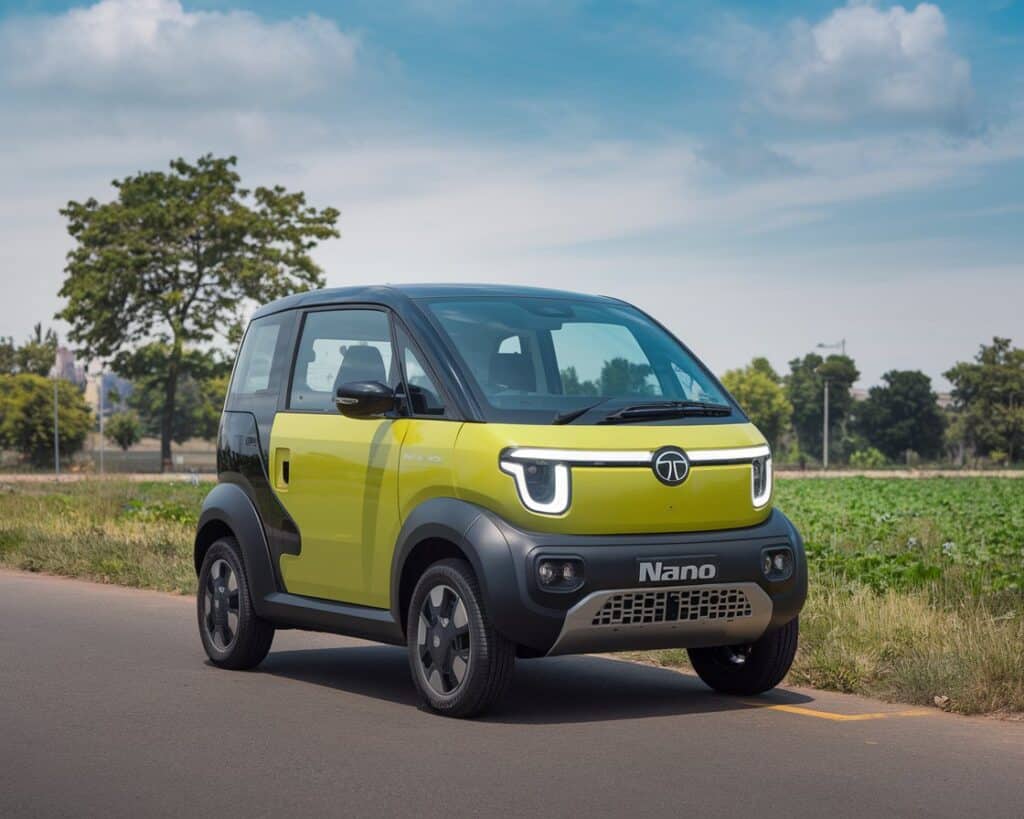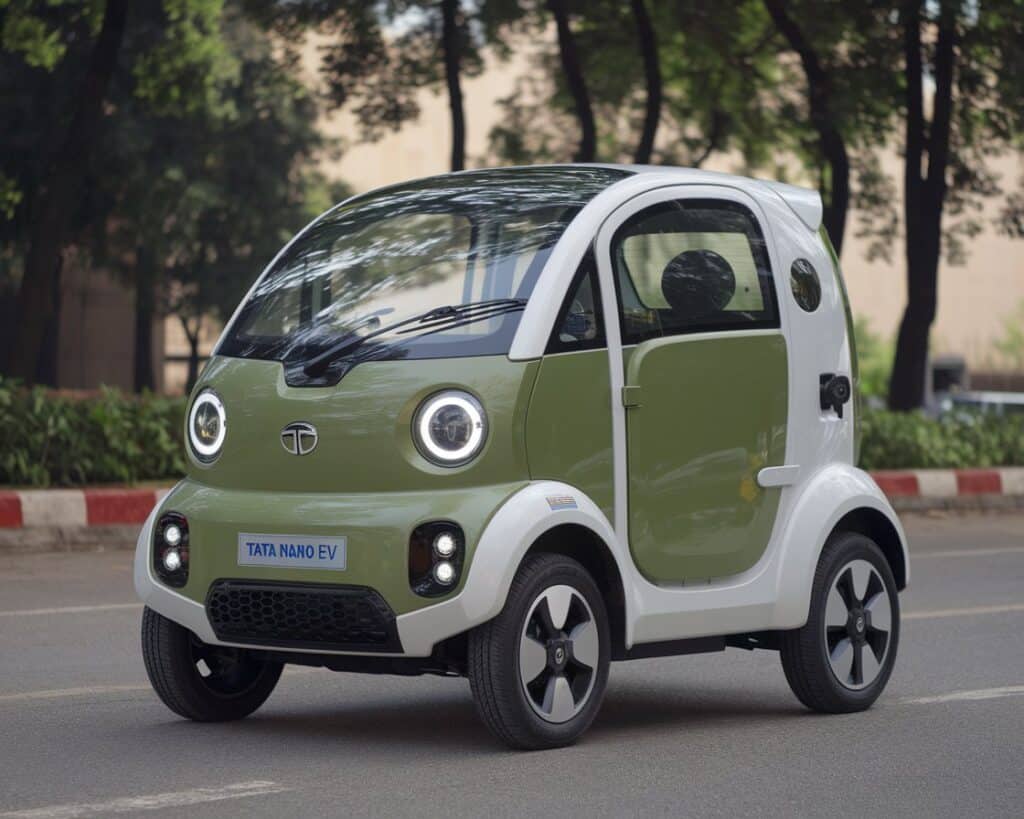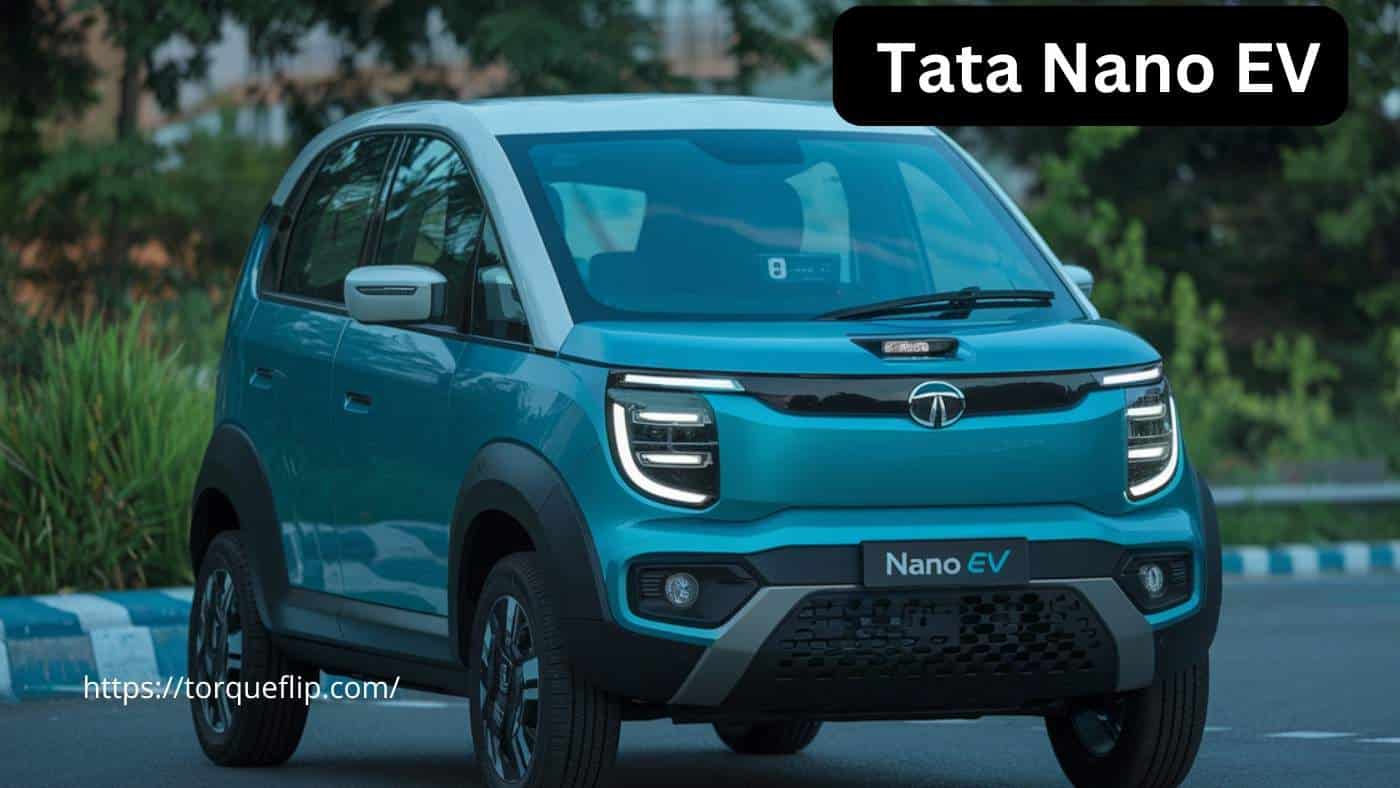The Tata Nano EV has been making headlines as a potential game-changer in the world of affordable electric vehicles (EVs). With the growing demand for eco-friendly transportation, Tata Motors has reimagined its iconic Nano as an electric car. But is it worth the hype? In this blog, we’ll dive deep into the features, design, performance, pricing, and more to help you decide if the Tata Nano EV is the right choice for you. Let’s get charged up and explore!
Tata Nano EV Features: What to Expect?
The Tata Nano EV promises to deliver a mix of affordability and efficiency, making it one of the most anticipated electric vehicles (EVs) in India.
- Electric Powertrain – A modern battery pack with improved range.
- Compact Design – Ideal for city driving and narrow roads.
- Enhanced Safety Features – Improved structural integrity and airbags.
- Smart Infotainment System – Touchscreen interface with smartphone connectivity.
- Fast Charging Support – Quick charge capabilities for better usability.
- Eco-Friendly – Zero carbon emissions contribute to a greener environment.
Tata Nano EV Design: Classic with a Modern Touch
The design of the Tata Nano EV retains the classic Nano shape but integrates modern styling cues to align with today’s aesthetic trends.
Exterior Enhancements
- Sleek LED headlights and taillights for better visibility.
- Aerodynamic improvements for increased efficiency.
- Stylish alloy wheels enhancing its appeal.
- New color options for a fresh look.
Interior Improvements
- Spacious and well-designed dashboard with digital instrument cluster.
- Comfortable seats with high-quality upholstery.
- Increased cabin space for better passenger comfort.

Tata Nano EV Engine & Performance
The heart of the Tata Nano EV lies in its electric motor and battery performance. Unlike the petrol-powered Nano, this version comes with an advanced electric powertrain.
| Specification | Tata Nano (Old) | Tata Nano EV (New) |
|---|---|---|
| Power Output | 37 HP | 55 HP |
| Torque | 51 Nm | 120 Nm |
| Battery Pack | N/A | 17-24 kWh (Expected) |
| Range | N/A | 200-250 km (Estimated) |
| Charging Time | N/A | 60 min (Fast Charging) |
The Tata Nano EV is expected to offer better acceleration, quieter operation, and lower maintenance costs compared to its petrol counterpart.
Tata Nano EV vs Old Tata Nano: Key Upgrades
With a shift from petrol to electric, Tata Motors has significantly improved the Nano’s performance and safety features.
| Feature | Old Tata Nano | Tata Nano EV |
|---|---|---|
| Engine Type | Petrol | Electric |
| Mileage | 23 kmpl | 200-250 km (Range) |
| Safety | Basic | Airbags, ABS, Improved Structure |
| Infotainment | Basic Radio | Smart Touchscreen |
| Charging | N/A | Fast Charging Support |
Tata Nano EV Pricing: Expected Cost
One of the biggest advantages of the Tata Nano EV will be its affordability. Reports suggest that Tata Motors aims to price it competitively to make electric mobility accessible to a larger audience.
| Model | Expected Price (INR) |
|---|---|
| Tata Nano EV Base Model | ₹4-5 Lakhs |
| Tata Nano EV Mid Variant | ₹5-6 Lakhs |
| Tata Nano EV Top Model | ₹6-7 Lakhs |
This pricing strategy positions the Nano EV as one of the most budget-friendly electric cars in the market.
Tata Nano EV Customization Options
One of the most exciting aspects of the Tata Nano EV is its customization potential. Despite being a compact car, owners can tweak its aesthetics, interior, and tech features to make it truly unique.
Exterior Customization:
- Custom Paint Jobs – Available in a variety of colors, with premium options for metallic and matte finishes.
- Alloy Wheels – Replace the standard steel rims with sporty alloy wheels for a premium look.
- Body Kits – Spoilers, side skirts, and bumper enhancements can give the Nano EV a sportier appeal.
- Custom Lighting – LED headlamps, underbody neon lights, and tinted tail lamps for added style.
Interior Upgrades:
- Infotainment System – Upgrade to a larger touchscreen with Apple CarPlay and Android Auto.
- Premium Upholstery – Leather or fabric seat covers in custom colors and stitching patterns.
- Ambient Lighting – Soft LED mood lighting for a premium feel.
- Sound System – Upgrading to high-quality speakers and a subwoofer for better audio experience.
Customization is a great way to make your Tata Nano EV feel personalized and modern, allowing owners to enhance both looks and functionality.

Rider Community and Support
Tata Nano has always had a strong owner community, and with the EV version, it’s only growing.
Where to Connect with Other Nano EV Owners?
- Online Forums & Social Media Groups – Platforms like Facebook, Telegram, and Reddit have active Nano EV communities where owners discuss upgrades, issues, and tips.
- Tata EV Meetups – Tata organizes occasional events and meetups for EV owners, where you can network with fellow riders.
- Local EV Clubs – Many cities now have EV clubs where Tata Nano EV owners can share their experiences and attend exclusive events.
The Nano EV community helps new buyers with real-world insights, modifications, and troubleshooting tips, making ownership smoother and more enjoyable.
Safety Features in Tata Nano EV
Tata Motors has stepped up its safety game with the Nano EV, ensuring it meets modern safety standards.
Key Safety Features:
- Dual Airbags – Provides protection in case of a frontal collision.
- ABS with EBD – Anti-lock Braking System (ABS) and Electronic Brakeforce Distribution (EBD) improve braking control.
- Hill Hold Assist – Prevents rolling backward on inclines.
- Electronic Stability Control (ESC) – Enhances stability during sudden maneuvers.
- Reinforced Chassis – A stronger frame for improved crash safety.
- Rear Parking Sensors & Camera – Helps drivers park safely in tight spaces.
- Regenerative Braking – Improves safety by slowing down the vehicle while recovering energy.
These features make the Nano EV safer than its petrol predecessor, ensuring peace of mind while driving in city traffic.
Maintenance Tips for Tata Nano EV
Maintaining an electric vehicle is much easier than a traditional petrol or diesel car, but it still requires some care. Here’s how you can keep your Tata Nano EV in top shape:
Battery Care:
- Avoid deep discharges; try to keep the battery charge between 20% and 80%.
- Park in shaded areas to prevent excessive heat exposure, which can degrade the battery faster.
- Charge using a standard Tata-recommended charger to avoid overloading the battery cells.
Tire Maintenance:
- Keep the tire pressure at the recommended PSI for optimal efficiency.
- Rotate tires every 5,000 to 7,000 km to ensure even wear.
Brake System Check:
- Since EVs use regenerative braking, brake pads last longer, but a routine inspection every 10,000 km is still recommended.
Software Updates:
- Tata frequently releases firmware updates for improved efficiency and safety—always update when available.
Riding Techniques for Maximum Efficiency
Want to maximize the Tata Nano EV’s battery life and efficiency? Here are some expert riding techniques:
- Smooth Acceleration – Unlike petrol cars, EVs deliver instant torque. Avoid sudden acceleration to conserve battery.
- Use Regenerative Braking – Instead of hard braking, ease off the accelerator early to let regen braking slow the car.
- Drive in Eco Mode – This reduces power output slightly but increases range.
- Plan Routes Efficiently – Avoid heavy traffic and steep inclines where possible to minimize energy loss.
- Keep Windows Closed on Highways – Reduces drag and improves efficiency.
By following these simple steps, you can extend the driving range and reduce battery wear over time.
Long-Term Value of the Tata Nano EV
Resale Value:
EVs tend to hold their value better than petrol cars, and since Tata’s EV lineup is gaining popularity, the Nano EV’s resale price should be relatively stable.
Running Costs:
With electricity being cheaper than petrol, the Tata Nano EV’s cost per kilometer is significantly lower.
Government Incentives:
In many regions, electric vehicles qualify for government subsidies, tax rebates, and lower registration fees, further increasing their long-term value.
What’s the Average Maintenance Cost for Tata Nano EV?
One of the biggest advantages of an EV is its low maintenance cost. Since there are no oil changes, fuel filters, or complex engine components, the Nano EV’s annual maintenance costs are much lower than petrol cars.
| Maintenance Task | Frequency | Estimated Cost (INR) |
|---|---|---|
| Battery Checkup & Software Update | Every 6 Months | ₹1,000 – ₹2,000 |
| Brake Pad Replacement | Every 15,000 km | ₹3,000 – ₹5,000 |
| Electric Motor Servicing | Every 2 Years | ₹4,000 – ₹6,000 |
| Tyre Replacement | Every 40,000 km | ₹8,000 – ₹12,000 |
| Suspension & Alignment Check | Annually | ₹1,500 – ₹3,000 |
| AC Filter & Cabin Cleaning | Annually | ₹800 – ₹1,500 |
| Battery Replacement | Every 5-7 Years | ₹30,000 – ₹50,000 |
Total Estimated Annual Maintenance Cost:
₹7,000 – ₹12,000 per year
This is significantly lower than maintaining a petrol car, where yearly expenses often exceed ₹15,000 – ₹20,000.
Conclusion: Is Tata Nano EV Worth Buying?
The Tata Nano EV brings a fresh perspective to the affordable electric car market. With a compact design, enhanced safety, and budget-friendly pricing, it is set to become a favorite among urban commuters. If you’re looking for a cost-effective, eco-friendly car for city drives, the Nano EV could be the perfect choice.
FAQs About Tata Nano EV
1. What is the expected launch date of Tata Nano EV?
Tata Motors has not officially announced a launch date, but it is expected to arrive by 2025.
2. How much will the Tata Nano EV cost?
The estimated price range is ₹4-7 lakhs, making it one of the most affordable EVs in India.
3. What is the range of Tata Nano EV?
The Nano EV is expected to have a driving range of 200-250 km per charge.
4. Will Tata Nano EV support fast charging?
Yes, the Nano EV is expected to support fast charging, reducing charging time significantly.
5. Is Tata Nano EV a good choice for long-distance travel?
The Nano EV is best suited for city commuting due to its range and compact size, but it may not be ideal for long-distance highway drives.
The Tata Nano EV is a significant step toward making electric vehicles more affordable and practical in India. As the EV infrastructure improves, this small electric car could play a huge role in shaping urban mobility.










1 thought on “Tata Nano EV: Is It the Future of Affordable Electric Cars?”